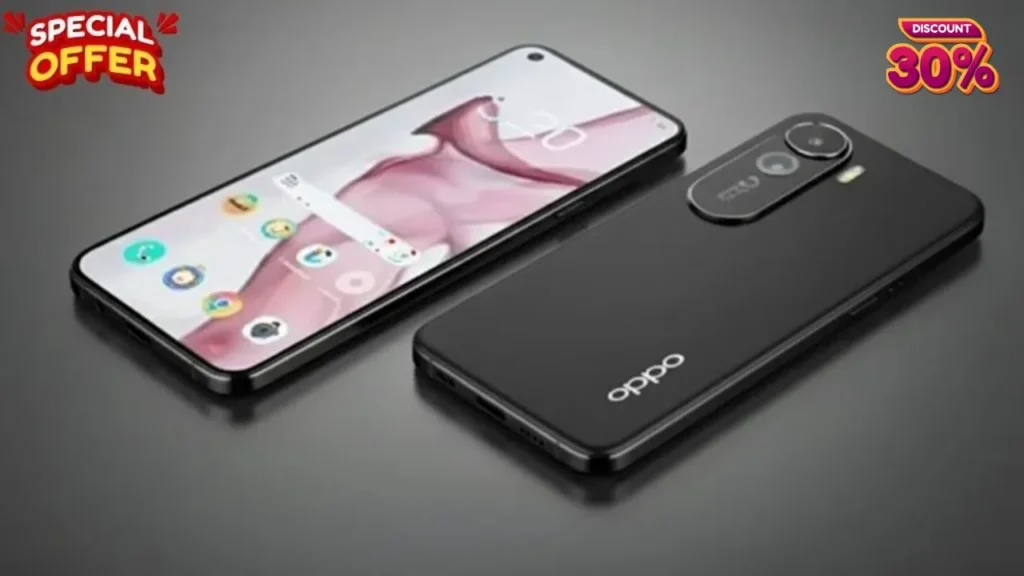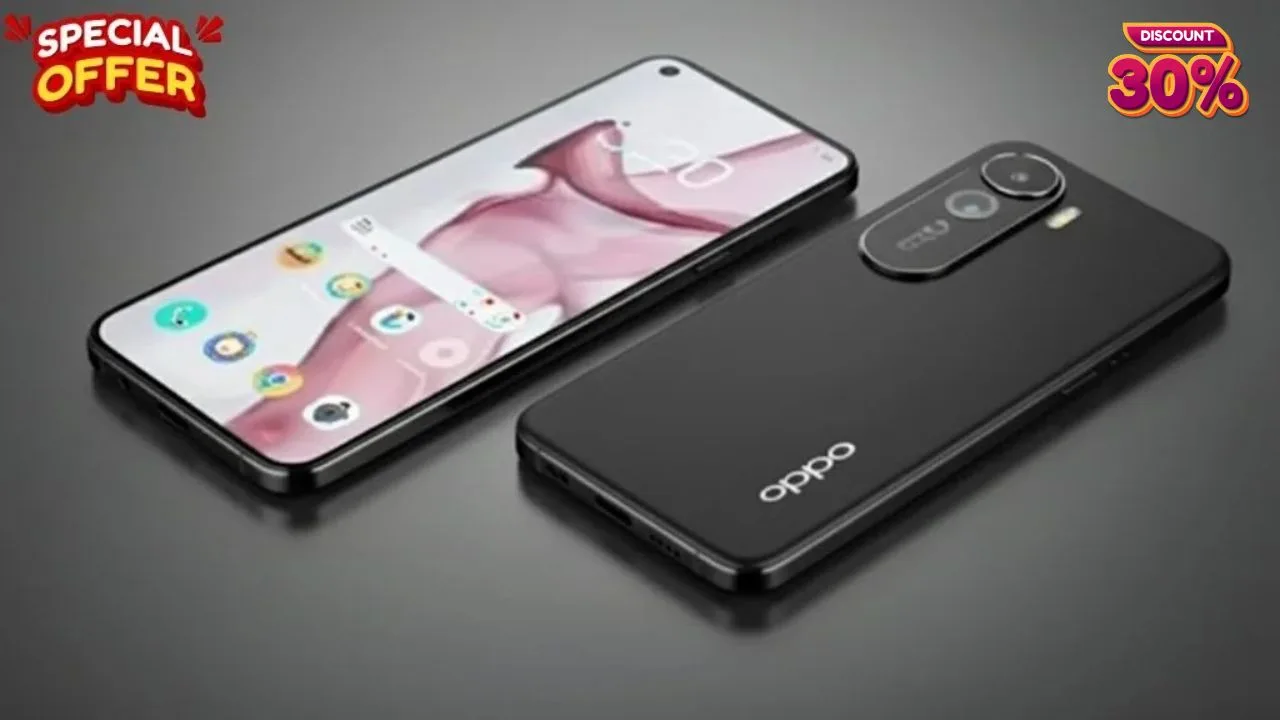The battle in the smartphone space to outdo with hardware specs is getting hotter. Make it a device that redefines what a “camera phone” is and can do, that charges in a jiffy, that presents gorgeous visuals, and that you barely have to plug in.
Oppo’s latest premium 5G phone idea delivers just that a 400 MP camera, a blistering 150 W charger, an AMOLED display, and a monstrous 7500 mAh battery. In this article, I’ve tried to explain why each of these features matters, how they can change your daily experience, and where you might find obstacles or compromises associated with that much power.
At first, the thought of a 400 MP camera is a little bit much. Yet in the age of AI photography, high megapixel counts mean software can crop, zoom, and re-compose images without sacrificing detail. Coupled with Oppo’s image processing and you could do more than just capture a photograph you’d capture a rich digital original that you can manipulate in many others.
Meanwhile, there’s a 150 W fast charger to juice up that big battery in no time. And speaking of battery, 7500 mAh is big practically unheard of in today’s flagship phones. An AMOLED display also brings deep blacks and vivid colors, as well as power efficiency in certain parts of the screen. All in all, this mashup of features teases a future where you find a single phone that fulfills all your needs photography, long hours, gaming, streaming with no compromises.
The 400 MP Camera
When Oppo says they have a 400 MP camera, it is good to know what that really means. More megapixels means you can capture more detail in each shot, which gives you more flexibility to crop, zoom or edit your photos after the fact. When you have a vast landscape shot and you want to zoom into a small portion of it in your later, you can do that without losing much clarity.
But it’s not just about megapixels size of the sensor, quality of the lens, processing of the image, and noise reduction, all have a part to play. Oppo would almost certainly have the 400 MP sensor take advantage of the brand’s advanced computational photography, which merges exposures, applies AI denoising, and a lot more to deliver clean final images, even in the dark.
This camera might have the potential to unlock new creative possibilities. Ultra-high resolution panoramas, reframed videos, incredibly detailed macro shots, or hybrid modes where part of your photo is ultra sharp and the rest is artistic, those are some of the things we’ll try.
For the content creators out there, having that extra “real estate” in an image is liberating. But the file sizes would bloat. A 400 MP raw photo could weigh dozens of megabytes or more, particularly if you’re saving in a “lossless” or high-bit format. So you’d want to have lots of storage and quick phone-internal data pipelines to shuffle images around without lag.
It may not always be necessary to sample at 400 MP, but the sensor detail will benefit AI functions such as background blur, subject extraction and zoom stabilization. In a nutshell, the additional resolution is a reservoir, a resource, that the software might use to enhance your daily 12 MP or 48 MP images.
Power with the 7500 mAh Battery
The 7500 mAh battery is among the first things that catches your attention. These days, 4000–5000 mAh is all ready considered quite generous in phones. The 7500 mAh cell is almost at tablet territory. What do they mean in real life?
When purposefully designed hardware and software, you’re able to make it through two full days calls, streams, photos and gaming, and more on your second and third days of use. Heavy users may still need to charge at night, but the margin is larger. Still, there are trade-offs when you fit such a battery.

The phone will get thicker and heavier. Thermal management gets more complex: a large cell will generate more heat when charging fast, and the heat needs to be evacuated without making the user’s hand uncomfortable. In addition, battery longevity (how many cycles it can endure before its capacity decreases) becomes pivotal, large batteries provide more cycles, but if the chemistry ages quickly, the benefit eventually diminishes.
In light of these obstacles, Oppo will almost certainly employ advanced cell design, staggered charging, as well as temperature management measures to ensure safety and efficiency. The result for the user is that the worry about “will my phone last the day?” becomes a lot less.
150W Charger
To make the most of a 7,500mAh battery, you need fast charging. And that’s where the 150W charger will be available. At such power levels, theoretical full charge times could be as low as 20 to 30 minutes (Depending on charging curve, safety constraints, thermal limits and battery size). In real-world use, you could expect to see 0 to 50% in 10 to 15 minutes, or a few hours of use for a small portion of a plug-in.
What’s the big deal? Because predictive even with a massive battery real life usage is unpredictable. You might forget to charge, or need a quick top-up before you head out. You don’t need to tether your phone for long hours, thanks to 150W charge.
But it also minimizes “charging downtime” as a pain point. But, high wattage charging requires excellent engineering, high quality cables, connectors, internal resistance, safety circuits, heat control, all need to be top class. Bad design would cause wear, overheating, or shortened battery life.
Oppo is no stranger to fast charging (See its SuperVOOC/Flash Charge Solutions), and pulling that off at 150 W in a safe, consumer-friendly package would be a tour de force. Working well, it turns charging from a chore into a convenience.
AMOLED Display
A top tier screen is essential for a high-end phone. AMOLED screens produce deep blacks and high contrast and are power efficient since black pixels can effectively be switched off. That eat up energy, particularly when the screen has a darker portion. If combined with a high refresh rate (eg 120Hz or higher) and high touch sampling, anims/games/scrolling would be buttery-smooth.
If we’re talking about a good display on such a phone, it would also cover a wide color gamut (DCI-P3 or more), be very bright (usable outdoors), and have an adaptive refresh rate for power saving when you’re not using a high refresh. Features like HDR, always-on display, and variable refresh rate for video playback help further refine the visual treat versus battery life equation.
And since the camera is a particular focal point, the display should have a high fidelity photo rendering experience accurate color, strong contrast, and minimal motion or image compression-related artifacting while zooming or panning around high resolution photos. In short, the AMOLED screen needs to live up to the ambitions of the camera and battery.
Real-World Use
In real-life, this phone would feel like a power user’s dream. You could shoot detailed images and know there’s room to edit. You could stream, play games, record, or use multiple apps at once without worrying about the battery.
A little rest and a mild recharge bring back several hours of usage. Display your content for the world to see Your content shines through with the Mushroom display. You rarely worry about running out of juice or having to dial back the creative aspects of your work.
For travelers, photographers, content creators or anyone else who regularly uses their phone for these purposes, they could eliminate the need to carry external battery packs or additional cameras. It cuts down on your gear needs. Even to the typical user, the “overkill” specs still translate to peace of mind: a phone that’s compatible and ready whenever you want it.
As much as possible, but some compromises will have to be made. It could be thicker and heavier than the ultra-thin dailies. Some premium features wireless charging, IP waterproof proofing, modular components could have to rely on some sacrifices based on space restrictions inside. Heavy load or fast charging heat may be felt if not well controlled. Software tuning will be crucial in achieving a good balance of performance, battery life and safety.
Expect, Trade-Offs and Challenges to Look For
There are challenges with every ambitious spec. First, size and weight: the phone won’t be featherlight, packing a 7500 mAh battery, extra metal plating, insulation, and structural supports. A lot of users consider both appearance and ergonomics so the company needs that they conceal the bulk.
Second, thermal design: during charging, and also when under heavy loads – gaming, shooting hi res. In the absence of active cooling and a well designed heat dissipation path, you could potentially face performance throttling or discomfort.
Third consideration is battery lifespan: very high power fast charging results in increased wear on the cell if it’s not properly taken care of. Oppo will have to employ multi-stage charging, cell balancing and voltage regulation to ensure battery health over the years.
Fourth, software and storage: enormous files from 400 MP images require speedy storage and a scalable file system. The phone needs to pack enough high-speed memory (UFS or equivalent) and RAM to let it process and render the images in a smooth manner.
These specifications would undoubtedly be expensive to produce. Oppo will need to make a trade off between cost vs features to bring this phone in the target market. The one word attached to premium buyers they use that qualifies their expectation level within every aspect of an object should be the same in materials, camera, durability, and software support.
And, real user experience: specs alone aren’t enough to be satisfying. How it copes with motion, the compromise between speed and image quality, battery life under real-world mixed usage, how charging feels in daily use – those are things that users will ultimately decide upon.
Why This Could Matter
If Oppo manages to launch a phone with a 400 MP sensor camera, 150 W charging support, giant 7500 mAh battery, and a spectacular AMOLED display, it could have the potential to change user expectations. What is ”too much” today might become tomorrow’s commonplace.
It may pressure rival firms to respond with new ideas or push software and app ecosystems to adjust to ultra high resolution content. It can also mean for users blurring the distinction between smartphones photography and “professional” rig setups, less reliance on power banks, and a general real worry about battery becoming a thing of the past into a relic of batteries.
Practical benefit Because in developing markets in particular, where charging infrastructure is spotty, a phone that charges quickly and holds a charge for a long time is a real advantage. For content creators and power users, it enables creative freedom: shoot more, edit on the go, travel lighter. For everyday users, it means the reassurance that the phone won’t slow you down.
